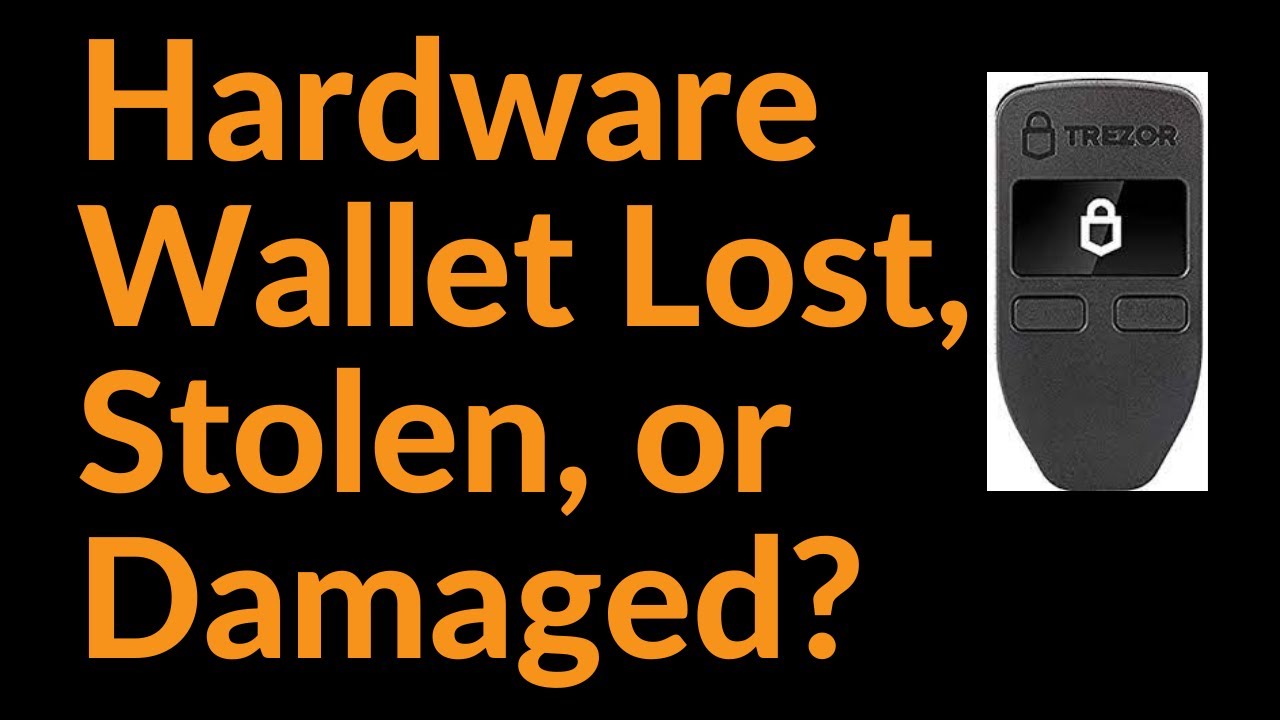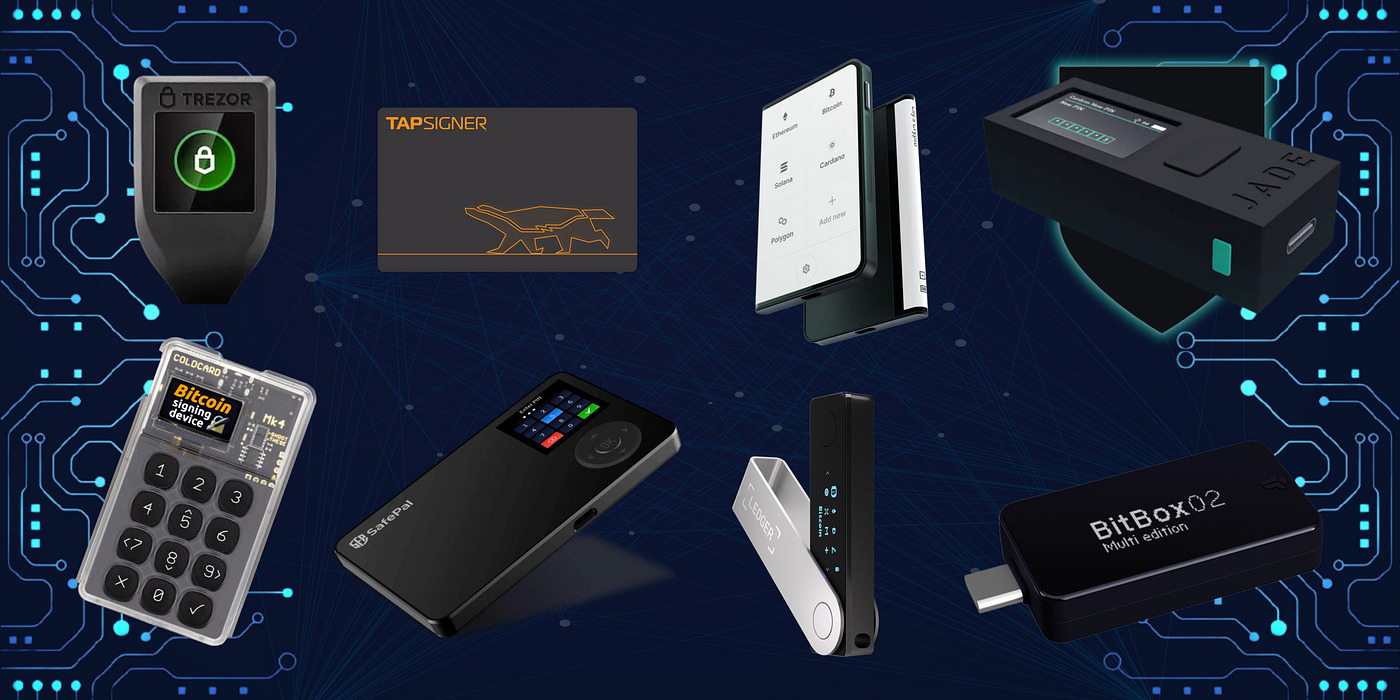Introduction
Hardware wallets have become increasingly popular among cryptocurrency enthusiasts as a secure and reliable means of storing their digital assets. With their robust security features and offline storage capabilities, hardware wallets offer users peace of mind knowing that their private keys and funds are protected from online threats.
However, as with any physical item, there is always a risk of misplacing or losing a hardware wallet. Whether it’s due to theft, damage, or simply a case of forgetfulness, the thought of losing a hardware wallet can be unnerving. If you find yourself in this situation, it’s important to understand the necessary steps to take in order to mitigate potential risks and recover your funds.
In this article, we will explore what you should do when you realize you’ve lost your hardware wallet. We will discuss the importance of assessing the risk, canceling and recovering the hardware wallet, as well as provide practical solutions for different scenarios. Additionally, we will provide some preventive measures to consider for the future to minimize the chances of losing a hardware wallet altogether.
It’s important to note that the steps and actions discussed in this article are general guidelines and may vary depending on the specific hardware wallet you use. It’s always advisable to consult the official documentation of your hardware wallet manufacturer or seek professional assistance if you find yourself in the unfortunate situation of losing your hardware wallet.
Understanding Hardware Wallets
Hardware wallets are physical devices designed to securely store private keys, which are required to access and manage your cryptocurrencies. Unlike software wallets that are connected to the internet, hardware wallets store your private keys offline, providing an additional layer of security against online threats, such as hacking and phishing attacks.
One of the key features of hardware wallets is their ability to generate and store private keys within the device itself. This means that even if your computer or smartphone is compromised, your private keys remain secure within the hardware wallet. It also eliminates the risk of keyloggers or malware capturing your private key when you enter it on the device.
Most hardware wallets utilize a combination of PIN codes and recovery seed phrases to further enhance security. The PIN code acts as an initial layer of protection by preventing unauthorized access to the device. The recovery seed, consisting of a sequence of random words, serves as a backup for your private keys. In the event that your hardware wallet is lost, damaged, or stolen, the recovery seed can be used to restore your funds on a new device.
Hardware wallets are typically designed to be user-friendly, with intuitive interfaces and easy-to-follow setup processes. They also support a wide range of cryptocurrencies, allowing you to securely store different types of digital assets in one device.
It’s important to note that while hardware wallets provide excellent security for storing your cryptocurrencies, they have limitations. For instance, they do not protect against physical theft or damage to the device itself. It’s crucial to handle your hardware wallet with care and keep it in a secure location to minimize the risk of loss or theft.
Furthermore, it’s important to ensure that you purchase your hardware wallet from reputable sources to avoid counterfeit devices that may compromise the security of your funds. Always verify the authenticity of the hardware wallet and double-check the manufacturer’s website for recommended resellers.
What to Do When You Realize You’ve Lost Your Hardware Wallet
Discovering that you’ve lost your hardware wallet can be a distressing experience, but it’s important to remain calm and take immediate action to minimize the potential risks. Here are the steps you should follow:
- Assess the situation: Start by thoroughly searching for your hardware wallet in all the possible places where you might have misplaced it. In some cases, the wallet may simply be misplaced and not lost or stolen. If you still can’t locate it, proceed to the next step.
- Secure your funds: Once you’ve confirmed that your hardware wallet is lost, it’s crucial to secure your funds. Most hardware wallets have a PIN code protection feature, which means that even if someone finds the device, they won’t be able to access your funds without the PIN code. However, to be on the safe side, consider moving your cryptocurrencies to an alternate secure wallet or exchange while you figure out the next steps.
- Contact the manufacturer: Get in touch with the manufacturer of your hardware wallet as soon as possible. They may have specific protocols and support channels for dealing with lost or stolen devices. Provide them with all the necessary information and follow their instructions to report the loss and seek guidance on the recovery process.
- Cancel and recover: Depending on the hardware wallet model and manufacturer, they may have a procedure in place to cancel and recover your lost device. This typically involves using your recovery seed phrase to restore your funds onto a new hardware wallet. Follow the manufacturer’s instructions carefully to ensure a smooth recovery process.
- Monitor your accounts: While you may have secured your funds by transferring them to another wallet, it’s important to keep a close eye on your accounts and transactions. Monitor for any suspicious or unauthorized activity and report it immediately to the respective exchanges or wallet providers.
Remember, each hardware wallet manufacturer may have slightly different procedures and recommendations for dealing with lost devices. It’s essential to follow their instructions and reach out to their support channels for personalized guidance based on your specific situation.
Assessing the Risk
When you realize you’ve lost your hardware wallet, it’s important to assess the level of risk involved. Understanding the potential consequences can help you make informed decisions and take appropriate actions. Here are some factors to consider when assessing the risk:
- Wallet contents: Take stock of the cryptocurrencies stored on your hardware wallet. Assess the value of the funds and determine if there are any sensitive or high-value assets. This will help you prioritize your recovery efforts and determine the potential impact of the loss.
- Backup preparedness: Consider whether you have a backup of your recovery seed phrase for the hardware wallet. If you have a backup, it will simplify the process of recovering your funds onto a new device. However, if you don’t have a backup, the recovery process may be more complex and time-consuming.
- Physical security: Reflect on the level of physical security in the location where the hardware wallet was lost. If you’re confident that the wallet is in a secure environment, the risk of unauthorized access or theft may be lower. On the other hand, if the wallet was lost in a public place or in an insecure setting, the risk may be higher.
- Device encryption: Consider whether your hardware wallet has additional security measures in place, such as device encryption. Some hardware wallets offer encryption features to protect the stored private keys in case the device falls into the wrong hands. This can provide an extra layer of protection against unauthorized access.
- Time elapsed: Assess the amount of time that has passed since you lost the hardware wallet. The longer the time, the higher the risk of someone discovering and attempting to access your funds. Act promptly to minimize the window of vulnerability.
By evaluating these factors, you can better understand the level of risk associated with the loss of your hardware wallet. This will help guide your decision-making process and assist you in prioritizing actions to mitigate potential threats and recover your funds.
Cancelling and Recovering the Hardware Wallet
If you’ve lost your hardware wallet, it’s important to take immediate steps to cancel and recover the device. Here are some general guidelines to consider:
- Contact the manufacturer: Reach out to the manufacturer of your hardware wallet and inform them about the loss. They may have specific procedures and guidelines for handling lost or stolen devices. Provide them with all the necessary details, including the serial number and any additional information they may require.
- Cancel the wallet: In some cases, the hardware wallet manufacturer may be able to cancel the lost device, rendering it useless for anyone who may have found it. This can provide an extra layer of security to prevent unauthorized access to your funds.
- Utilize recovery seed phrase: If you have a backup of your recovery seed phrase, you can use it to recover your funds onto a new hardware wallet. Follow the manufacturer’s instructions carefully to ensure a successful recovery process. This typically involves setting up a new wallet, entering the recovery seed, and verifying the authenticity of the backup.
- Reset and update security features: Once you’ve recovered your funds onto a new hardware wallet, it’s advisable to reset and update the security features. This includes changing the PIN code and any other authentication settings. Taking these measures will help ensure the ongoing security of your funds.
- Update relevant accounts: If you had linked your hardware wallet to any cryptocurrency exchanges, wallets, or other platforms, it’s important to update your account settings. Remove any references to the lost hardware wallet and update your security settings as necessary.
It’s crucial to follow the specific instructions provided by the hardware wallet manufacturer. Each manufacturer may have different procedures and requirements for cancelling and recovering a lost device. These instructions are usually available on their official website or through their customer support channels.
Keep in mind that the recovery process may take time, as it involves setting up a new hardware wallet, transferring funds, and ensuring the security of your new device. Stay patient and diligent throughout the process to ensure a successful recovery and safeguard your digital assets.
Potential Scenarios and Actions
When you lose a hardware wallet, the specific circumstances and context can vary greatly. To help you understand the potential scenarios and corresponding actions, let’s explore some common situations:
- Lost but not stolen: If you have misplaced your hardware wallet in your home or another known secure location, thoroughly search the area to find it. Consider retracing your steps and check places where you typically keep valuable items. If all efforts fail, proceed to cancel and recover the wallet following the manufacturer’s instructions as mentioned earlier.
- Possibility of theft: If you suspect that your hardware wallet may have been stolen, it’s crucial to act swiftly. Report the theft to the local authorities and provide them with any relevant information or evidence. Contact the hardware wallet manufacturer to inform them about the theft and follow their instructions for canceling and recovering the device. Monitor your accounts and report any unauthorized activity immediately.
- Lost while traveling: Losing a hardware wallet while traveling can be particularly challenging due to unfamiliar surroundings. If you believe that you lost the wallet during your journey, retrace your steps and check any locations you visited. Contact the local authorities and provide them with details about the lost wallet. Cancel and recover the wallet as soon as possible to mitigate any potential risks while you’re away from home.
- Backup recovery issues: If you have a backup of your recovery seed phrase but encounter challenges during the recovery process, refer to the manufacturer’s documentation or seek support from their customer service. They will guide you through the troubleshooting steps and help you recover your funds. Patience and careful execution of the recovery procedure are key during this stage.
- No recovery seed backup: If you don’t have a backup of your recovery seed phrase, the recovery process becomes more complex. Contact the manufacturer for guidance, as they may have alternative methods or solutions for recovering your funds. It’s important to stress the importance of regularly backing up your recovery seed phrase to prevent such situations in the future.
Remember, these are general scenarios, and the actions you should take may vary depending on your specific circumstances and the recommendations of the hardware wallet manufacturer. Always consult their official documentation or reach out to their support team for personalized guidance based on your situation.
Preventive Measures for the Future
While losing a hardware wallet can be a stressful experience, there are several preventive measures you can take to minimize the risk of such incidents in the future. Here are some key steps to consider:
- Backup your recovery seed phrase: The importance of backing up your recovery seed phrase cannot be emphasized enough. Keep multiple copies of your recovery seed in offline, secure locations. Consider using a combination of physical copies, encrypted digital storage, or even a hardware wallet designed specifically for recovery seed storage.
- Secure physical storage: Store your hardware wallet in a secure location when not in use. Consider using a safe or a locked drawer to protect it from theft or accidental damage. Avoid leaving it in easily accessible places or unattended in public areas.
- Utilize additional security features: Take advantage of the additional security features offered by your hardware wallet. Set a strong PIN code and consider enabling any available encryption options. These extra layers of protection can make it more challenging for unauthorized individuals to access your funds even if they gain physical possession of the device.
- Maintain device firmware: Keep your hardware wallet’s firmware up to date by regularly checking for updates from the manufacturer. Firmware updates often include security enhancements and bug fixes that help safeguard your funds against potential vulnerabilities.
- Verify the authenticity of your hardware wallet: Purchase your hardware wallet from reputable sources and verify its authenticity to avoid counterfeit or tampered devices. Check the manufacturer’s website for recommended resellers and inspect the packaging for signs of tampering before using the device.
- Practice good digital hygiene: Be cautious when interacting with cryptocurrency-related websites, apps, and emails. Be vigilant against phishing attempts, malware, and other online threats. Double-check URLs, enable two-factor authentication whenever possible, and use strong, unique passwords for all your accounts.
- Consider multisig wallets: Multisig wallets require multiple private key signatures to initiate transactions. Utilizing a multisig wallet can provide an added layer of security since even if one key is compromised, the funds remain secure.
By implementing these preventive measures, you can significantly reduce the chances of losing your hardware wallet and protect your valuable digital assets. Remember to stay informed about the latest security best practices and regularly review and update your security settings as necessary.
Conclusion
Losing a hardware wallet can be a distressing experience for cryptocurrency enthusiasts. However, by following the appropriate steps, you can mitigate the potential risks and recover your funds. It is important to assess the situation, secure your funds, contact the hardware wallet manufacturer, cancel and recover the device, and monitor your accounts for any suspicious activity. Additionally, taking preventive measures such as backing up your recovery seed phrase, securing the physical storage of your hardware wallet, and utilizing additional security features can help minimize the chances of future incidents.
Remember to reach out to the hardware wallet manufacturer for personalized guidance and instructions tailored to your specific circumstances. Each manufacturer may have different procedures and recommendations for canceling and recovering lost devices.
While hardware wallets offer robust security, it’s important to handle them with care and be vigilant against potential threats such as theft and physical damage. Practicing good digital hygiene, regularly updating firmware, and verifying the authenticity of your hardware wallet are crucial steps in maintaining the security of your digital assets.
By implementing these preventive measures and staying informed about the latest security practices, you can continue to enjoy the benefits of hardware wallets while keeping your cryptocurrencies secure.

























